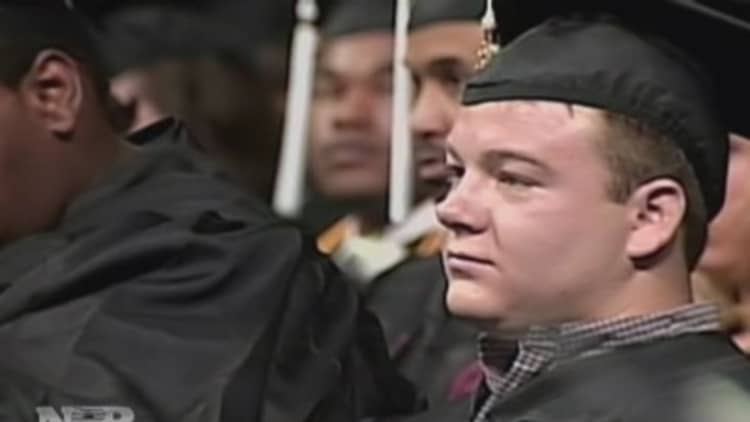The U.S. economy should rebound to a roughly 3 percent annual growth rate after a rocky start to 2014 and put the Federal Reserve on track to raise rates later next year, Atlanta Federal Reserve Bank President Dennis Lockhart said on Tuesday.
Lockhart, who does not currently sit on the Fed's policymaking committee, said he was "not in a rush" for the central bank to end the era of loose monetary policy and begin raising rates.
Read MoreServices sector expands at faster pace in May
Speaking at Louisiana State University's Graduate School of Banking, Lockhart said there was still ample slack in labor markets and a need for the Fed to be patient until it is clear that economic growth is sustainable and strong enough to maintain full employment.
But Lockhart also said he agreed with what has become a generally rosy consensus at the Fed about the direction of the U.S. economy. If anything, some members are becoming more concerned that the economy—and labor markets in particular—may tighten faster than expected and put the Fed in a difficult spot.
In his own district, Lockhart said businesses were reporting conditions in some sectors and some trades that amounted to full employment. Some industries reported shortages of workers with some skills and an inability to fill jobs. But the situation is a patchwork nationally, and he said he feels there are many workers ready to take on more hours or new jobs as the economy strengthens.
Read More4 reasons US is recovering, leaving world behind
"I feel the need to see confirming evidence in the data validating the view that above-trend growth is occurring and is sustainable, and that the FOMC (Federal Open Market Committee) is closing in on its policy objectives," before rates increase, said Lockhart, considered among the Fed's centrist members. "A combination of a shortfall from full utilization of our nations labor resources and inflation below the FOMCs longer-term objective would, in my view, justify patience in raising policy rates."

He added that he did not expect "dramatic" and rapid improvement in employment data, but that steady progress would likely put the Fed in position to begin raising rates in the second half of next year.
Once that process begins, he said it would lead to a steady cycle of increases until the Fed funds rate reaches close to 4 percent—a figure close to its historic average. He said he disagrees that permanent economic weakness will give rise to a lower long-term rate.
The discussion over how to steer monetary policy into a post-crisis phase has begun in earnest, with Fed members at their last meeting debating how to "normalize" monetary policy. That will involve not only raising rates but draining some $2.5 trillion in reserves from the banking system and eventually paring its own balance sheet.
Read MoreUS Senate backs Fischer for Fed board
Lockhart said he thought the process of normalization could prove tricky.
"This will be a significant, even historic, transition that must be executed skillfully, with tools sufficient to the task, and with clear communication that fosters orderly market adjustment, to the extent possible," Lockhart said.
—By Reuters

